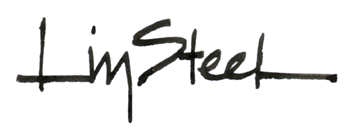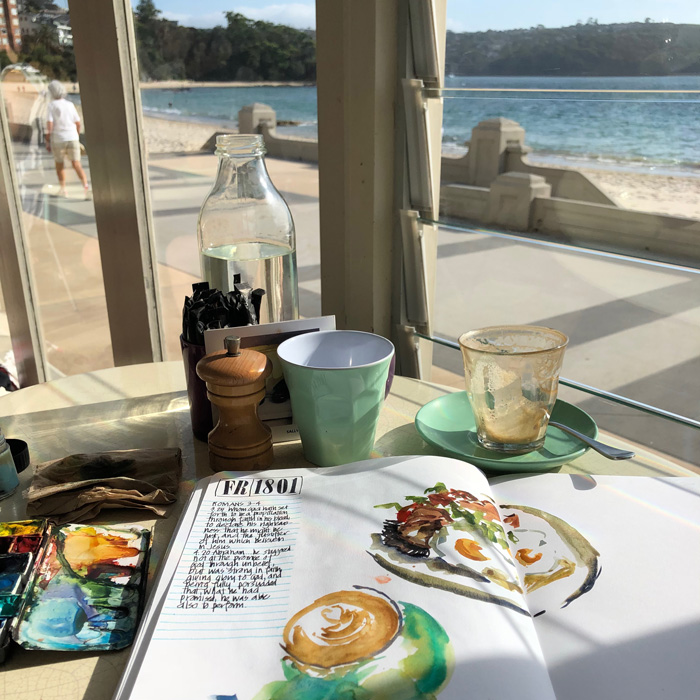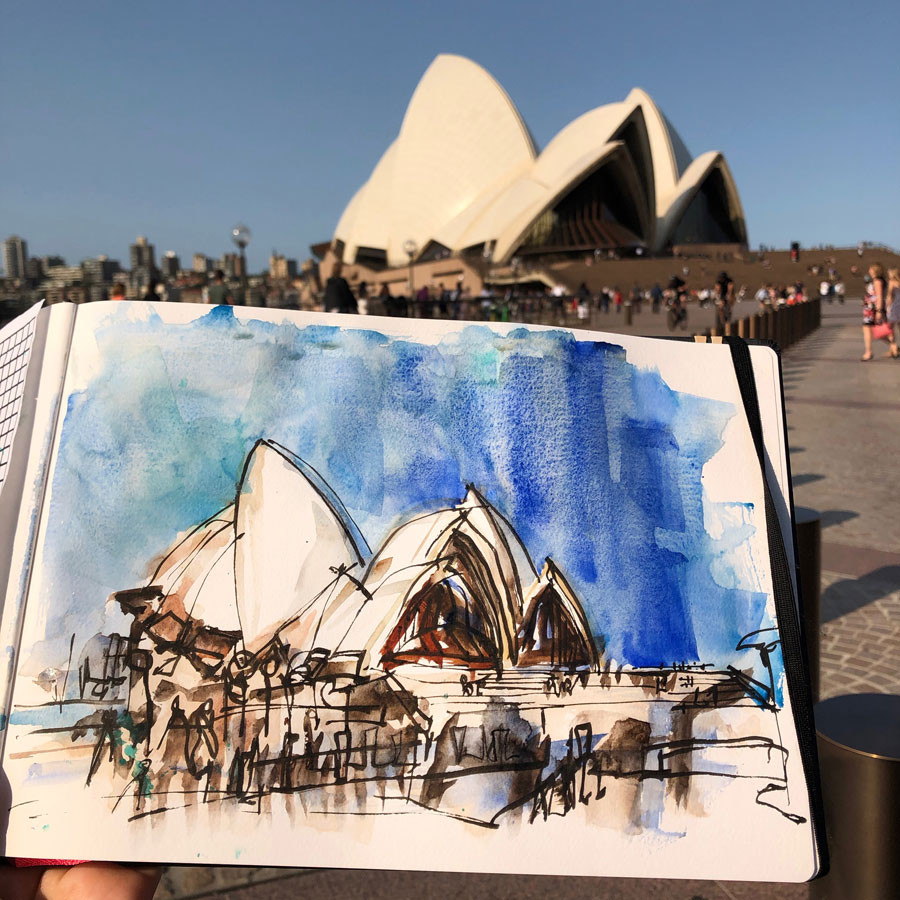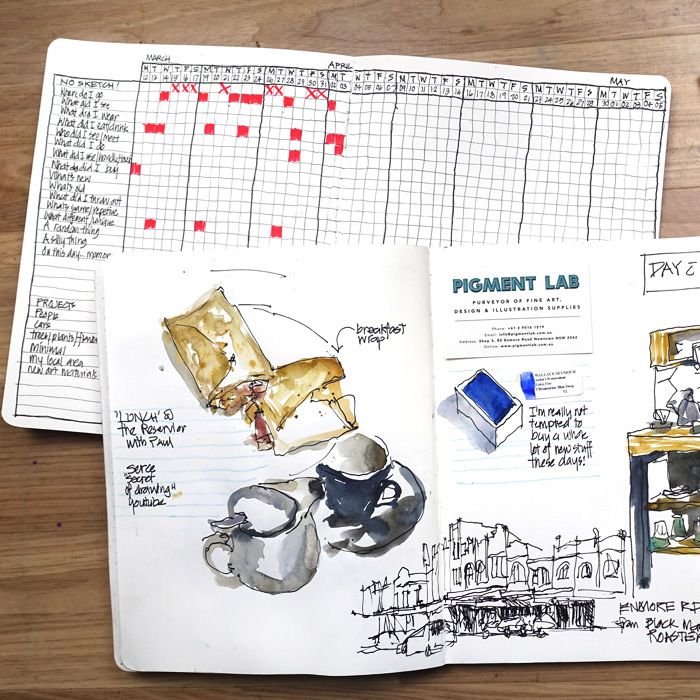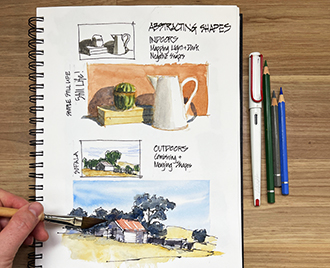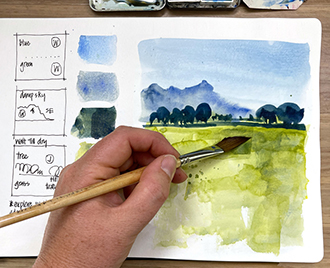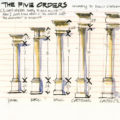I initially started using watercolour because I wanted to sketch while I was traveling, and so I started sketching my everyday life as a form of training. But I soon discovered that everyday sketching created an incredible visual record of my life. So what started out as a means to an end, became an end in itself.
On this page, I want to share some important strategies for building an everyday sketching habit and to provide links to lots of interesting articles on the topic. In many ways, achieving an everyday sketching habit for myself is the biggest theme of this blog!
Everyday Sketching: why keeping a sketchbook is so important
For me sketching is a spontaneous recording of the moment, it is not an elaborate drawing or a polished painting.
Sketching is my initial response to what is in front of me. It’s not planned and it normally has a time constraint. I’m not trying to create masterpieces, I’m simply aiming to record my life through sketches! So sketching everyday bits and pieces is a really important part of my art. Travel sketching is the best but the real skills are developed through sketching when I’m back home.
In order to be able to sketch freely it’s important to create a daily (or almost daily) habit of sketching, and this is why keeping a sketchbook of your life is a great way to do this. Sketching your everyday life not only establishes this habit but at the same time you are creating a wonderful record of your life. And in addition, sketching the boring things of life can elevate the everyday to something special, causing you to pause and appreciate the small things in life.
Everyday Sketching: Seven key elements for building a habit
There is a lot I can share on the topic of everyday sketching, but these are some important aspects to consider in order to build a strong sketching habit.
The most important thing is to just do it and over time you will discover what works for you.
1. Put a sketch kit together
A sketching kit contains the essential tools you can easily take with you, not everything that you might ever want to use! There is no perfect kit that suits everyone: it is a never-ending process of refinement and adjustment and a lot of fun.
Don’t feel as if you have to have a perfect kit to begin sketching. A pen (and/or pencil) and some form of colour (a few coloured pencils or a basic watercolour kit) is all that you need to start. You will discover what works for you through the act of sketching, so don’t make putting a kit together become a barrier to starting!
Limiting your art tools is important as it removes some of the decision-making process in starting. If you only have one pen in your sketching kit then you don’t have to stress over which pen to use – you will just pick it up and start drawing. So minimise your kit as much as possible, to begin with – you can always expand it later on.
I have a whole lesson on putting a kit together in my SketchingNow Foundations Course plus there is a heap of free information in my Sketching Tools section.
2. Choose a sketchbook
You don’t need the perfect sketchbook in order to start. If you are simply drawing in pen or ink then any book will do. If you are wanting to use some watercolour (or other water-soluble tools such as watercolour pencil) you will need a book that can take some water. Look for a book with pages that are 150gsm or over and one that is labelled ‘suitable for mixed media, light washes or watercolour’. You can use watercolour on lots of different types of drawing paper which have not been designed to take it, but when you are starting out it’s good to use the best watercolour paper you can afford.
Using a sketchbook keeps everything together in one place, both the ‘good’ and the ‘bad’, whereas loose sheets are easily discarded and scattered. The goal shifts from doing each work as a ‘masterpiece’ to creating a narrative of your life and your creative journey in one. The more of you and your life that you put into this learning process, the more rich and meaningful it will be.
If you are a more seasoned sketcher you might find that changing a sketchbook – or even switching the format – can help you get out of a rut.
Recommended Reading:
- How to choose a sketchbook
- Sketchbook recommendations from my readers
- Video: Finding a sketchbook that suits
- Index of the sketchbooks which I have reviewed to date
3. Make time for sketching
You must carve out time or else sketching won’t happen. Either set a dedicated ‘sketching time’ or start fitting sketching into your daily routine – while you are doing something else or in the in-between moments. I am a strong advocate for both approaches but because of my busy lifestyle, I am always trying to do the latter.
There are many opportunities in daily life when you CAN sketch if you are thinking about it and have the confidence to go for it. After many years of taking risks and sketching in all kinds of half-opportunities, my friends and family now expect me to sketch and give me time for it or prompt me when my sketchbook is not out. I sketch alongside my nieces and nephews or on the train or while waiting for it to arrive.
These days I sketch when I go to a cafe to work and I sketch from my car whenever I go eg. to the gym.
So instead of pulling out your phone during in-between times, pull out your sketchbook and a pen instead.
Even if you can’t sketch when you’re out you can still sketch an object or two at the end of the day. So instead of spending your free time in the evening consuming (scrolling Instagram or watching Netflix) spend some time creating! Simply sketching your living room or an object or two from your day can record the event in a way that is memorable.
4. Find some favourite subjects to sketch
It can be hard to think of something to sketch in the evenings so find a few go-to subjects for the days when you can’t think of anything.
Years ago, when I was working as an architect, I used to sketch while I was having a cup of tea after dinner so when I couldn’t think of anything to sketch I started sketching my teacups. I also often found myself longing for travel so I often ended up sketching a fancy Baroque facade (from a photo) on Friday night as a way to wind down from a busy week of work.
These days, teacups and fancy architecture are still fun to sketch but I also like tackling complex street scenes and sketching people.
5. Sketch ‘boring’ subjects and scenes from your daily life
If you try and wait for inspiration to strike before sketching, it might never happen! It is hard to see the excitement when you are in the midst of your daily grind, so get into the habit of sketching anything from your day no matter how ‘boring’ you think it is.
Look for interesting compositions, focus on how edges intersection and shapes overlap. Look for interesting effects of light and shade. Try to find beauty in the ordinary.
6. Don’t expect every sketch to be a masterpiece
I used to want everything in my sketchbook to be a good ink and wash sketch but I have since discovered that I like variety. A simple continuous line sketch is a great record of a scene and more often than not, it’s successful as well.
I put a lot of emphasis on designing my pages and including text, headings, borders, collage etc. This means that I can create a pleasing sketchbook double page spread even though I wasn’t happy with one of the sketches on the page.
7. Keep sketching!
We all go through periods when for various reasons we don’t feel like sketching. Whilst it is possible to push yourself too hard to sketch, most of the time it’s the other way. The biggest hurdle is getting your pen or paints out and simply starting. So I know personally that I often have to push myself a little to start, and then I’m happy.
Treat yourself to a sketching outing – explore your hometown as a tourist. Of even just head out to a local cafe and sketch what is on the table. Try to see everything around you with fresh eyes. And don’t be afraid of what people think when you sketch in public. (See this article for more tips on that)
If you are not happy with a sketch, just turn the page and do another one (possibly of something else!). I would recommend that you keep all your unsuccessful sketches as they are never as bad as you think down the track, and doing a bit of review of your failures is the best way to learn. But I totally understand that sometimes you dislike looking at these disasters! So what works for me is to temporarily tape up the spread so that I don’t have to look at it while I’m using the sketchbook. Down the track I normally take the tap off, but while I’m filling up the book, it stays closed.
Don’t be discouraged by the less successful sketches. Try to find one aspect you like, or relive the fun moment you were trying to record. And turn the page and keep going!
Everyday sketching: Favourite Themes
Here are a few recurring themes in my everyday sketchbooks
- Teacup Sketching
- Cafe sketching and also Tearoom sketching!
- Sketching daily in my local area – Lindfield
- Sketching Sydney – I’m a bit obsessed with sketching the Sydney Opera House, the Sydney Harbour Bridge, The Rocks and Cockatoo Island
- Food sketching
- Sketching People
- Sketching Baroque buildings (from photos)
- Anything to do with Palladio
- Getting to know my watercolour paints and doing lots of mixing/colour charts
And some other themes:
- Teapots
- Bags (purses)
- Sewing and clothes
- Gardens, Botanic Gardens and Trees
- Identifying native plants
Everyday sketching: Further reading
In 2018 when I was struggling to sketch consistently I came up with a list of prompts. Read more about that here.
Here is a collection of articles that share a lot of my own struggles with sketching consistently.
- Do you struggle to sketch regularly? (lots of amazing comments!)
- Establishing habits for sketching more
- Struggling to find the time to sketch after a big overseas trip
- Needing to change my sketchbook
- When I have no time to sketch
- Full collection of ‘Last week’ articles – a wrap-up of all my sketches from the previous week
If you want to develop the skills to sketch anything in your everyday life, please check out my 12-week online course SketchingNow Foundations.
Going through this course will help you develop the skills you need to sketch the world around you and establish a sketching habit.
Find out more about SketchingNow Foundations
If you want to read some free instructional articles based on the SketchingNow Foundations Course click here for the Foundations Friday series.
2020 update
How everyday sketching differs from dedicated sketching outings and why it’s often harder!
